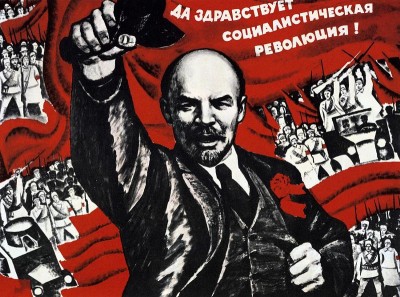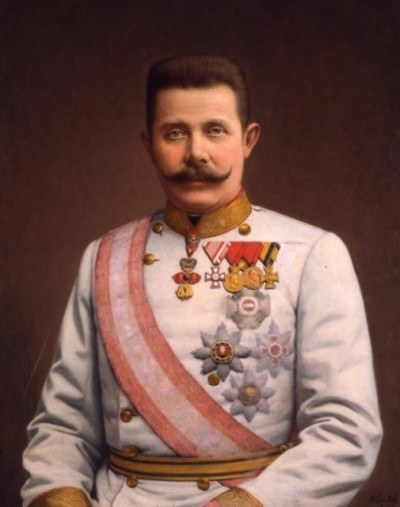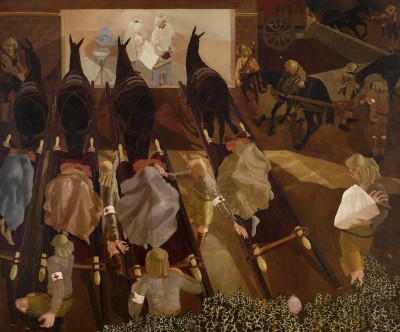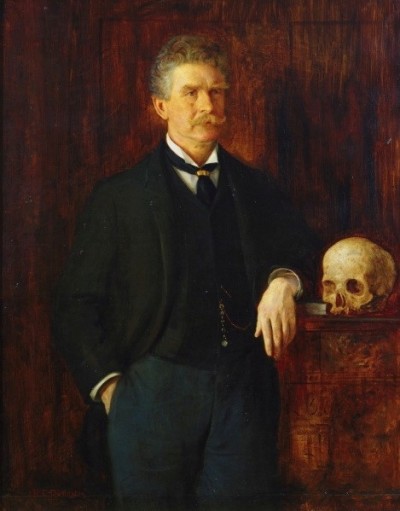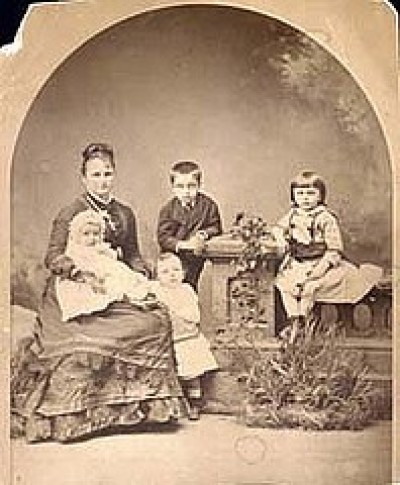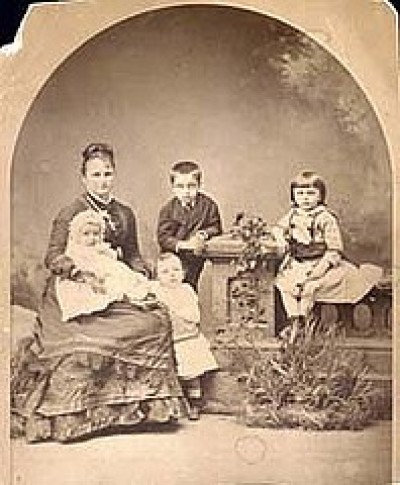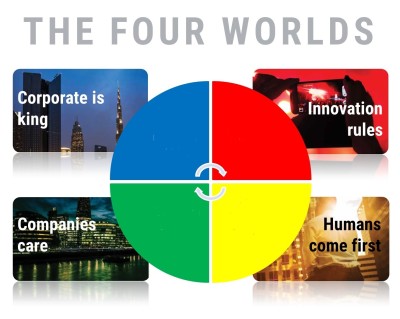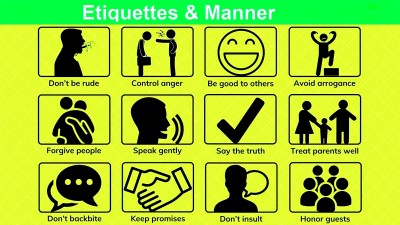Course description
The Russian Revolution of 1917
 On the morning of 17th July, 1918, the corpses of the last Tsar of Russia, Nicholas II, his wife the Tsarina Alexandra, and their four children, daughters Olga, Tatiana and Anastasia and their only son, Alexei, a severe haemophiliac, were taken into a forest, stripped and then buried, ending more than three centuries of rule by the Romanov dynasty.
On the morning of 17th July, 1918, the corpses of the last Tsar of Russia, Nicholas II, his wife the Tsarina Alexandra, and their four children, daughters Olga, Tatiana and Anastasia and their only son, Alexei, a severe haemophiliac, were taken into a forest, stripped and then buried, ending more than three centuries of rule by the Romanov dynasty.
Russia was deep in a civil war between the communist Bolsheviks and ‘white Russians’, many of whom wanted to put the Tsar back on the throne. It was not until 1921 that the war ended and the next year that Russia was renamed the Union of Socialist Soviet Republics. It would become a superpower in the decades following the Second World War, involved in a cold war with the capitalist west in countries as far apart and as different as Cuba, Vietnam and even Afghanistan, among many others.
 Karl Marx, the original communist, had never imagined that the revolution he felt sure was coming, and which would unite workers across the globe, would take place in agricultural Russia. And yet Tsar Nicholas and his family were dead. It would not be until 2007 that the last of their bodies would be discovered and confirmed by DNA testing to be the last of the Romanovs.
Karl Marx, the original communist, had never imagined that the revolution he felt sure was coming, and which would unite workers across the globe, would take place in agricultural Russia. And yet Tsar Nicholas and his family were dead. It would not be until 2007 that the last of their bodies would be discovered and confirmed by DNA testing to be the last of the Romanovs.
Only fifty years before, however, Nicholas’ ancestor, Alexander I, known as the Great Liberator, had freed the serfs – about a third of Russia’s population who were not free to choose their own master, marry or move from their master’s land – from the burden of their situation in 1861. Alexander had continued to make reforms aimed at creating a more liberal Russia but was assassinated by a left-wing terrorist group. This, of course, led to greater oppression and stricter measures against anybody opposing the Tsar.
 When Nicholas became tsar in 1894, his empire stretched from Poland in central Europe all the way to the far side of China on the Pacific Ocean. He ruled from Finland in the north to the border with Turkey in the south. Russia had a population of 126 million people from as many as 194 ethnic groups, many of whom were living in terrible hardship, even suffering from hunger and persecution as they were not ‘real’ Russians.
When Nicholas became tsar in 1894, his empire stretched from Poland in central Europe all the way to the far side of China on the Pacific Ocean. He ruled from Finland in the north to the border with Turkey in the south. Russia had a population of 126 million people from as many as 194 ethnic groups, many of whom were living in terrible hardship, even suffering from hunger and persecution as they were not ‘real’ Russians.
However, Russia was no longer the powerful state it had once been. The crash in the capitalist western money markets – which Russia’s resources were closely linked to – led to many years of crisis in Russia. Former serfs were – in name at least – free but many had little alternative but to stay with their previous masters because they were not allowed to sell the land they had been given in 1861 or to borrow money on it. Industrial workers in the cities lived under better conditions than previously but still laboured 65 hours a week for very low wages. In short, neither group had enough money to feed themselves properly. And then there were ethnic minorities who resented the push by government to make everybody Russian: many in the east and south were Muslims and the Russian Orthodox religion sat badly with them. They were also banned from voting or serving in the military and could only take advantage of very limited educational opportunities but were expected to behave as Russians and believe in Russia. Finally, there was a new type of radical university student, no longer too worried by the risk of execution for anti-government activity, who hated the autocracy of the Tsar’s rule and were excited by the revolutionary ideas published in books that the government could never completely suppress.
There was growing pressure on Nicholas to give greater constitutional rights to the people by calling a parliament (called a ‘duma’ in Russian) but, in 1904, he declared:
“I shall never agree to a representative form of government because I consider it harmful to the people.”
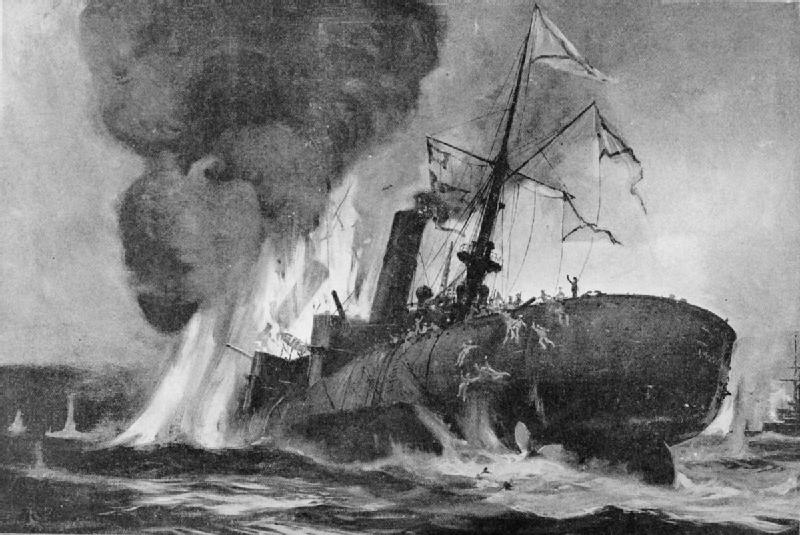 However, the following year saw a humiliating defeat by the Japanese in a pointless war over four small islands that most Russians had never heard of. These were on Japan’s doorstep but were on the other side of a vast continent from the Russian capital. There were great difficulties in supplying the military with ammunition and artillery or even enough food. The result was that the mighty Russian empire lost to a third class power. The people could not believe it!
However, the following year saw a humiliating defeat by the Japanese in a pointless war over four small islands that most Russians had never heard of. These were on Japan’s doorstep but were on the other side of a vast continent from the Russian capital. There were great difficulties in supplying the military with ammunition and artillery or even enough food. The result was that the mighty Russian empire lost to a third class power. The people could not believe it!
A few months later, a group of unarmed civilians, led by a priest, Father Georgy Gapon, walked to the Tsar’s home, the Winter Palace in St. Petersburg to deliver a petition to him. They seriously believed that the Tsar was chosen by God to rule but that he had poor advisors. Perhaps the petition carried by his faithful well-wishers would convince him of the justice of their requests.
The Tsar’s soldiers opened fire on the crowd, killing many women and children.
 Bloody Sunday, as it was called, led to nationwide strikes and mutinies in the armed forces. Revolution followed with general strikes bringing the country to a halt. Eventually, the Tsar was forced to agree to call the duma – but, he insisted – only as a consultative group. This did little to reassure the people. There were attempts to introduce reforms by politicians and, when these were not enough, strong arm tactics with mass executions by others.
Bloody Sunday, as it was called, led to nationwide strikes and mutinies in the armed forces. Revolution followed with general strikes bringing the country to a halt. Eventually, the Tsar was forced to agree to call the duma – but, he insisted – only as a consultative group. This did little to reassure the people. There were attempts to introduce reforms by politicians and, when these were not enough, strong arm tactics with mass executions by others.
The final straw came when the First World War began in September 1914. Russia joined the French and British against Germany, Turkey and Austro-Hungary. The battles were a disaster for Russia. The soldiers had little food and not enough guns or ammunition and lost again and again. There was not enough money to pay them. The Tsar took over command himself but the losses continued – in fact, they became worse. There were demonstrations and strikes with protestors shouting “Down with the Tsar!” Tsarina Alexandra, a German by birth, was hated; people even believed she was spying for Germany. The crazed monk, an alcoholic sex maniac, Rasputin, whom the family depended on to care for their severely ill son, Alexei, was assassinated in December 1916.
Just two months later, a march for women’s rights – but also for bread – on International Women’s Day in February 1917 developed into a strike across the capital. The soldiers refused to shoot at the protestors. In fact, many changed sides and joined the strikers.
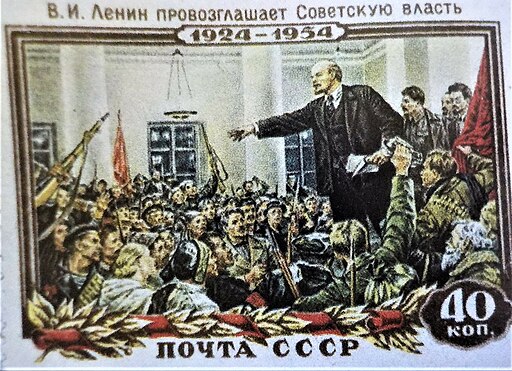 On 2nd March, the Tsar was forced to abdicate. Fifteen months later, he and all his family were dead.
On 2nd March, the Tsar was forced to abdicate. Fifteen months later, he and all his family were dead.
Meanwhile, in Petrograd – renamed to avoid the Germanic ‘burg’ during the First World War against Germany and its allies – the Provisional Government put in place after the Tsar’s abdication shared power with the communist soviets – or local councils – that were growing all over the country to represent workers’ interests. It was decided to continue the war. Only Vladimir Lenin and a small group of extreme communists, called Bolsheviks, condemned the fighting as imperialist. The Bolsheviks’ slogan was an easy one to remember: ‘Bread, Peace and Land’.
And it was the simplicity of the Bolshevik message that served them well when Russia lost 400,000 troops in a disastrous attack on Austro-Hungary. There were arrests, there were escapes – Lenin rushed on a false passport to Finland to avoid arrest – but, in the end, it was the Bolsheviks who won. And in 1922 the Soviet Union was born!
If you want to watch some videos on this topic, you can click on the links to YouTube videos below.
If you want to answer questions on this article to test how much you understand, you can click on the green box: Finished Reading?
Videos:
1. Mystery of the Romanovs (3:43)
2. Romanovs: 100 Years (6:00)
3. The Romanov family- An Imperial tragedy (5:05)
4. Tsar's Family Death (2:37)
5. The Russian Revolution of 1917 (4:56)
6. The Revolution That Shaped Russia (4:03)
7. The Russian Revolution 1917 (5:15)

 On the morning of 17th July, 1918, the
On the morning of 17th July, 1918, the Karl Marx, the original communist, had never imagined that the revolution he felt sure was coming, and which would
Karl Marx, the original communist, had never imagined that the revolution he felt sure was coming, and which would  When Nicholas became tsar in 1894, his empire stretched from Poland in central Europe all the way to the far side of China on the Pacific Ocean. He ruled from Finland in the north to the border with Turkey in the south. Russia had a population of 126 million people from as many as 194 ethnic groups, many of whom were living in terrible
When Nicholas became tsar in 1894, his empire stretched from Poland in central Europe all the way to the far side of China on the Pacific Ocean. He ruled from Finland in the north to the border with Turkey in the south. Russia had a population of 126 million people from as many as 194 ethnic groups, many of whom were living in terrible However, the following year saw a
However, the following year saw a  Bloody Sunday, as it was called, led to nationwide strikes and
Bloody Sunday, as it was called, led to nationwide strikes and  On 2nd March, the Tsar was forced to
On 2nd March, the Tsar was forced to 